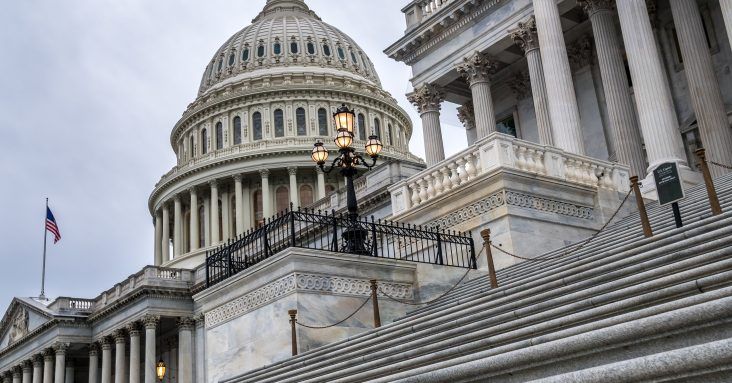CBO: U.S. budget deficit to spike national debt to 144% of GDP over next 30 years
by June 29, 2019 12:37 pm 1,292 views

If everything remains as is, growing budget deficits could drive federal debt held by American taxpayers to unprecedented levels over the next 30 years, according to the latest U.S. budget projections released on June 25 by the Congressional Budget Office (CBO).
That latest baseline projections incorporate CBO’s central estimates of various factors, such as productivity growth and interest rates on federal debt. CBO’s analysis indicates that even if values for those factors differed from the agency’s projections, debt several decades from now would probably be much higher than it is today, rising from 78% of annual gross domestic product (GDP) in 2019 to a whopping 144% by 2049.
Even with the scenario, the CBO report also highlights other possible outcomes in the agency’s debt forecast if underlying factors change. For example, if the growth of total factor productivity in the nonfarm business sector was one-half of one percentage point lower each year than CBO projects, all else being equal, debt in 2049 would be 185% of GDP. If such growth was one-half of one percentage point higher, debt that year would be 106% of GDP.
Concerning interest rates, a one percentage point hike each year above the CBO projection could push debt in 2049 up a whopping 199% of GDP. One percentage point lower, debt that year would be 107% of U.S. economic growth.
Under other alternative scenarios, U.S. consumer debt is still expected to rise higher even If lawmakers changed laws to maintain certain major policies. Most significantly, if Congress prevented a cut in discretionary spending in 2020 and an increase in individual income taxes in 2026—then debt held by the public would increase even more, reaching 219% of GDP by 2049.
By contrast, if Social Security benefits were limited to the amounts payable from revenues received by the Social Security trust funds, debt in 2049 would reach 106% of GDP, still well above its current level.
Overall, the projected increase in federal borrowing would lead to significantly higher interest costs. In CBO’s extended baseline projections, net outlays for interest more than triple in relation to the size of the economy over the next three decades, exceeding all discretionary spending by 2046. Mainly owing to the aging of the population, spending for Social Security and the major health care programs such as Medicare is projected to rise as a percentage of GDP over the coming decades. The growth of spending for Medicare and the other major health care programs is also driven by rising health care costs per person.
Measured as a percentage of GDP, revenues are projected to be roughly flat over the next few years, rise slowly, and then jump in 2026 because of the scheduled expiration of certain provisions of the $1.8 trillion 2017 corporate tax cut, the CBO report states. Thereafter, revenues will continue to rise but won’t keep pace with growth in spending.
“The factor contributing most to the long-term growth in revenues is the increasing share of income that is pushed into higher tax brackets,” the report states.
CBO now projects a deficit for 2019 of $896 billion, only $1 billion smaller than the deficit it projected in January. Over the next decade, the budget deficit will exceed $1 trillion each year beginning in 2022. Under President Donald Trump’s 2020 record $4.75 trillion budget, deficits would total $9.9 trillion over the 2020–2029 period, $1.5 trillion less than the deficits in CBO’s current-law baseline. Federal debt held by the public would increase from 78% of GDP in 2019 to 87 percent in 2029.
In relationship to the CBO report, U.S. Comptroller General Gene Dodaro testified to Congress on Wednesday (June 26) about the government’s unsustainable fiscal outlook, the need for a long-term plan to address growing debt, and other aspects of the nation’s fiscal health.
“Congress and the administration face serious economic, security, and social challenges that require difficult policy choices in the near term in setting national priorities and helping promote economic growth,” said Dodaro. “This will influence the level of federal spending and how the government obtains needed resources. At the same time, the federal government is highly leveraged in debt by historical norms.”
Link here for a PDF of the CBO analysis.
